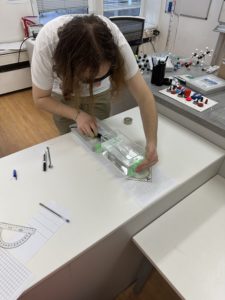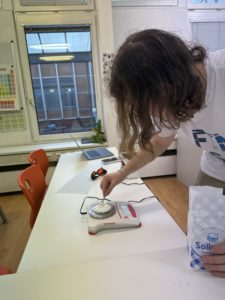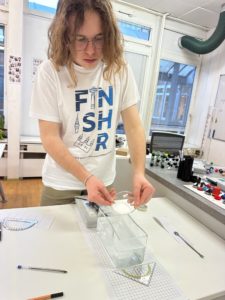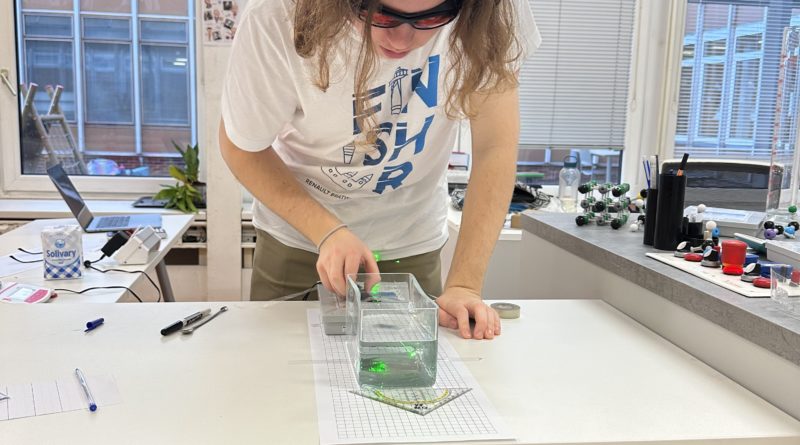Exploring the Effect of Salt Concentration on Refractive Index
By Viktor Doliak. DP 2 – Physics High level
As a part of the IB Physics curriculum, students have to participate in a small experiment. When we began studying waves, I became fascinated with the phenomenon of refraction. Refraction is the phenomenon that occurs when light travels through mediums of differing density, which causes the light to bend depending on the angle at which it enters, and the refractive index of the liquid. A question that arose during this process was whether there is a direct correlation between the angle of refraction and the refractive index, so I based my experiment on this question.
My hypothesis was that there is a relationship that follows a curve between the two variables. The experiment consisted of a tank with one litre of pure water, into which I added salt in increments of 50g. A laser was fired through the water and subsequently, a total of six measurements per each concentration was made. The angle of refraction was calculated by first finding the angle without any liquid in the container, then comparing all the other results to the initial measurement. The evidence concluded that there is a direct relationship between the angle of refraction and the concentration of salt in the liquid, bending the laser closer to however the difference became ever less prominent the more salt was added. As such, it can be concluded that the relationship follows a curve, and as such my hypothesis was true and the graph can be modelled. If I were to redo this experiment, I’d ensure that there would be more samples, so that there is more conclusive evidence, such that more of the curve can be modelled.



Thank you for reading.




